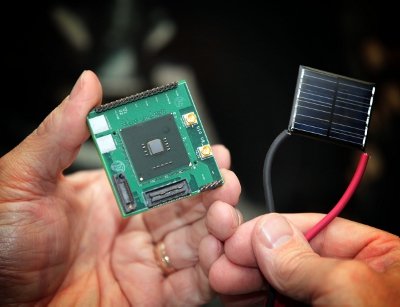Intel CTO Justin Rattner unveiled an experimental microprocessor that requires so little power it can be powered by a small solar cell at this week's Intel Developer Forum in San Francisco.
The chip owes its low power consumption to near-threshold voltage (NTV) technology. Threshold voltage is the minimum voltage required for transistors to turn on and begin conducting current, Sriram Vangal, principal research scientist at Intel, wrote in a blog post.
Intel's NTV circuits operate at about 400-500 millivolts, which presents a long list of technological challenges.
"To put it simply, the difference between a '1'and a '0'in terms of electrical signal levels become very small, so a variety of noise sources can cause logic levels to be misread, leading to functional failures," Vangal explained. "The key challenge is to lock-in this excellent energy efficiency benefit at NTV while mitigating performance loss."
To ensure reliability of its prototype, Intel developed "NTV-aware" techniques. On-die caches and logic were redesigned and new circuit design techniques and methods were incorporated to tolerate variations that occur at NTV.
The processor core that came out of these efforts did not require a heat sink and in NTV mode worked at less than 10mW and offered five-times better energy efficiency.
"While this prototype may not become a product itself, conclusions from the NTV research could lead to the integration of scalable NTV technology across a wide range of future products from mobile to HPC," Vangal wrote.

